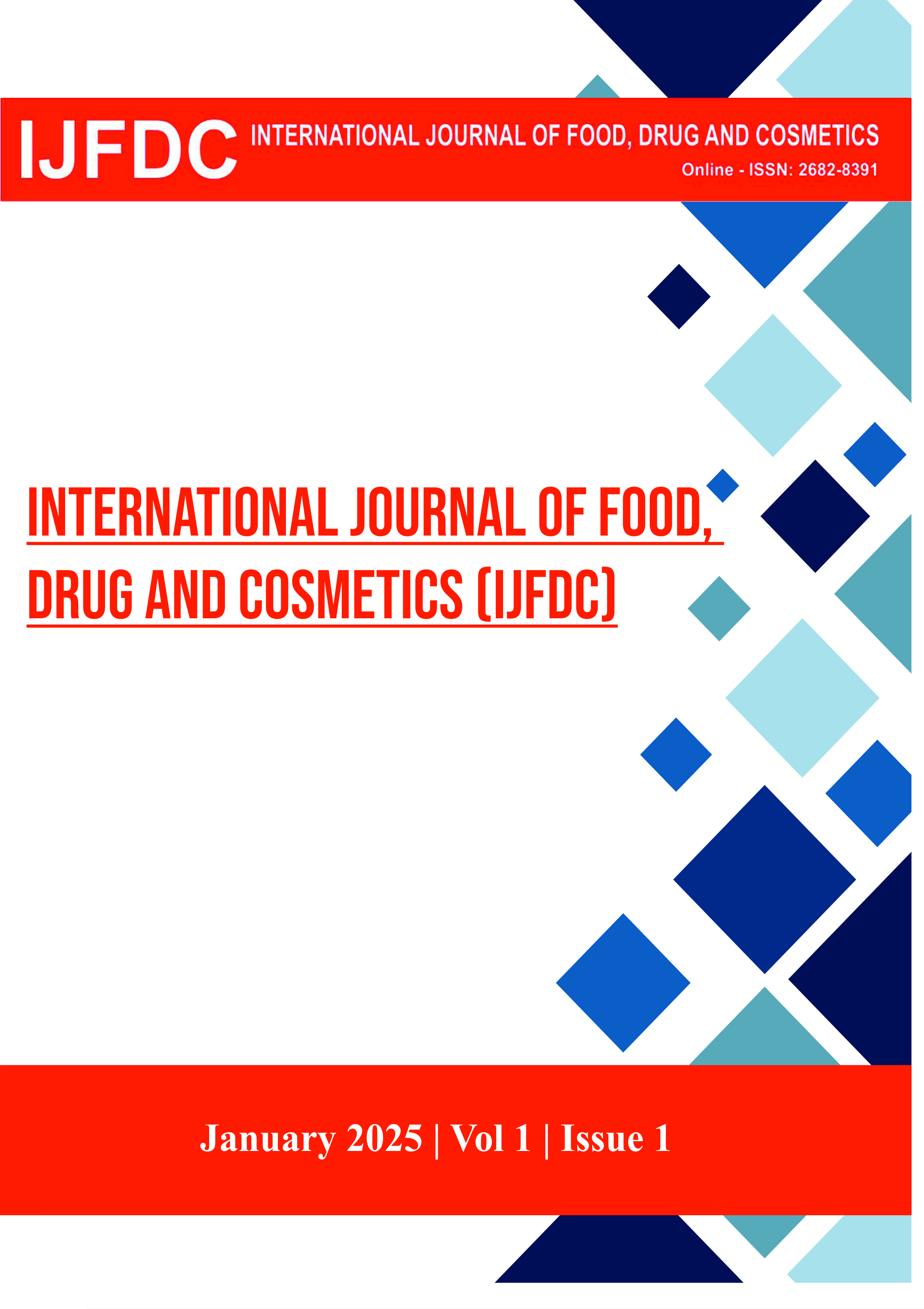ADVANCES AND CHALLENGES IN MULTI-MYCOTOXIN DETECTION: ENSURING SAFETY IN HERBAL MEDICINAL PRODUCTS
DOI:
https://doi.org/10.31674/ijfdc.2025.v1i01.001Abstract
Advances and Challenges in Multi-Mycotoxin Detection: Ensuring Safety in Herbal Medicinal Products
Abstract
Herbal medicinal products have experienced a dramatic surge in global use, particularly in regions where they serve as the primary source of healthcare. Despite their long-standing history and perceived safety, these products are increasingly contaminated by mycotoxins, posing significant health risks due to their potent nephrotoxic, carcinogenic, and immunosuppressive properties. This review provides a comprehensive examination of mycotoxin contamination in herbal remedies, focusing on key toxins such as aflatoxins, ochratoxins, zearalenone, trichothecenes, and fumonisins. It critically assesses the strengths and limitations of current analytical methodologies for simultaneous detection of multiple mycotoxins. Advanced techniques such as liquid chromatography-tandem mass spectrometry (LC-MS/MS) and ultra-high performance liquid chromatography (UHPLC) offer high sensitivity and specificity, yet they require significant capital investment and technical expertise. Complementary methods, including immunochromatographic assays, surface plasmon resonance biosensors, and surface-enhanced Raman spectroscopy, provide rapid and cost-effective screening options but are challenged by issues like matrix interferences and limited quantification capabilities. Integrating these diverse approaches promises a more holistic strategy for robust multi-mycotoxin analysis. Future research should target methodological enhancements to overcome current limitations, thus ensuring comprehensive risk assessment and regulatory compliance in the herbal medicine sector. This review highlights the urgent need for continued innovation in detection technologies to safeguard public health and enhance food safety protocols.
Keyword: Mycotoxin; Herbal Medicine Safety; Multi-Residue Analysis




